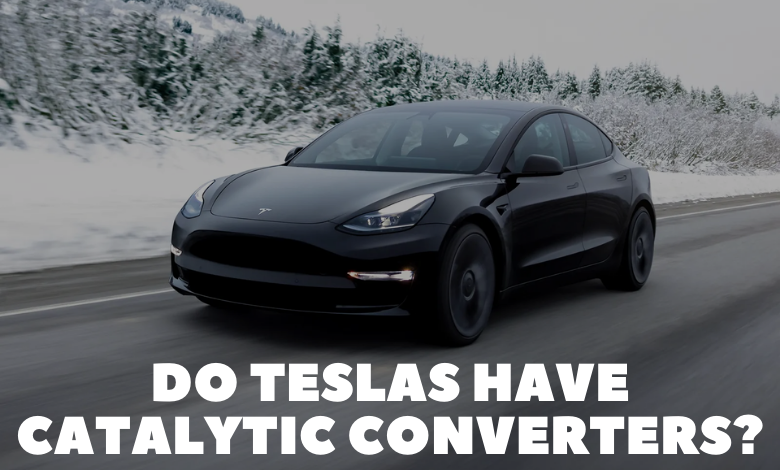Do Teslas Have Catalytic Converters?

Tesla, a pioneer in the electric vehicle (EV) industry, has revolutionized the automotive world with its advanced technology and commitment to sustainability. As more people transition from traditional internal combustion engine (ICE) vehicles to electric cars, questions about the differences between these vehicle types naturally arise.
One common inquiry is whether Teslas have catalytic converters, a component traditionally found in gasoline-powered vehicles. This article delves into the specifics of catalytic converters, their purpose, and whether they are present in Tesla vehicles.
Understanding Catalytic Converters
What is a Catalytic Converter?
A catalytic converter is an essential component of the exhaust system in ICE vehicles. Its primary function is to reduce harmful emissions produced by the combustion of gasoline or diesel. The catalytic converter uses a catalyst—typically made of platinum, palladium, and rhodium—to facilitate chemical reactions that convert toxic gases such as carbon monoxide (CO), hydrocarbons (HC), and nitrogen oxides (NOx) into less harmful substances like carbon dioxide (CO2), nitrogen (N2), and water vapor (H2O).
How Do Catalytic Converters Work?
Catalytic converters are designed to work under high-temperature conditions. When exhaust gases pass through the converter, they come into contact with the catalyst materials. These materials cause a chemical reaction that breaks down the pollutants into less harmful emissions.
The Role of Catalytic Converters in ICE Vehicles
Catalytic converters are critical for reducing air pollution from ICE vehicles. Regulations in many countries mandate their use to meet emissions standards. Without catalytic converters, the levels of harmful pollutants in vehicle exhaust would be significantly higher, contributing to environmental and health issues.
Electric Vehicles and Emissions
How Electric Vehicles Differ
Electric vehicles, such as those manufactured by Tesla, do not rely on internal combustion engines. Instead, they use electric motors powered by rechargeable batteries. This fundamental difference means that EVs do not produce exhaust emissions during operation. As a result, they do not require exhaust systems or catalytic converters.
Emissions from EVs
While electric vehicles themselves do not produce tailpipe emissions, it’s important to consider the overall environmental impact, including the production of electricity used to charge the batteries. The emissions associated with EVs largely depend on the energy mix of the grid from which the electricity is sourced. However, even when accounting for electricity generation, EVs typically have a lower overall carbon footprint compared to ICE vehicles.
Do Teslas Have Catalytic Converters?
No, Teslas do not have catalytic converters. Since Teslas are fully electric vehicles, they do not have exhaust systems or produce emissions that would necessitate the use of catalytic converters. This absence is a key factor in their environmental advantage over traditional gasoline or diesel-powered vehicles.
Why Teslas Don’t Need Catalytic Converters
- No Combustion Engine: The primary reason Teslas lack catalytic converters is that they do not have internal combustion engines. Without the combustion process, there are no exhaust gases to treat.
- Zero Tailpipe Emissions: Teslas produce zero tailpipe emissions during operation. This means there is no need for a system to convert harmful gases, as there are none produced.
- Simplified Design: The absence of an exhaust system and catalytic converter simplifies the design and maintenance of Teslas. There is no need to worry about components like oxygen sensors, exhaust pipes, or mufflers.
Benefits of Electric Vehicles Without Catalytic Converters
Environmental Impact
- Reduced Air Pollution: By eliminating tailpipe emissions, Teslas contribute to cleaner air and reduced smog formation, particularly in urban areas.
- Lower Greenhouse Gas Emissions: Over their lifetime, EVs typically result in lower greenhouse gas emissions compared to ICE vehicles, even when considering the electricity used for charging.
Maintenance and Cost Benefits
- Lower Maintenance Costs: Without a combustion engine and exhaust system, Teslas have fewer moving parts and components that can wear out, leading to lower maintenance costs over the vehicle’s lifespan.
- No Emissions Testing: Owners of electric vehicles do not need to undergo regular emissions testing, which can be a requirement for ICE vehicles in many regions.
The Future of Automotive Emissions
As the automotive industry continues to evolve, the shift towards electric vehicles is expected to accelerate. This transition is driven by advancements in battery technology, increased charging infrastructure, and growing consumer awareness of environmental issues. The absence of catalytic converters in EVs like Teslas is a testament to the broader changes in vehicle design and emissions reduction strategies.
In summary, Teslas do not have catalytic converters because they do not need them. As fully electric vehicles, they do not produce exhaust emissions that require treatment. This is one of the many benefits of electric vehicle technology, contributing to reduced air pollution and lower greenhouse gas emissions. As more people adopt EVs, the impact on the environment is expected to be increasingly positive, further highlighting the importance of transitioning away from traditional ICE vehicles.
The move towards electric vehicles represents a significant step forward in automotive technology and environmental stewardship. Understanding the differences between EVs and ICE vehicles, such as the absence of catalytic converters in Teslas, helps underscore the advantages of this transition and the positive impact it can have on our world.
